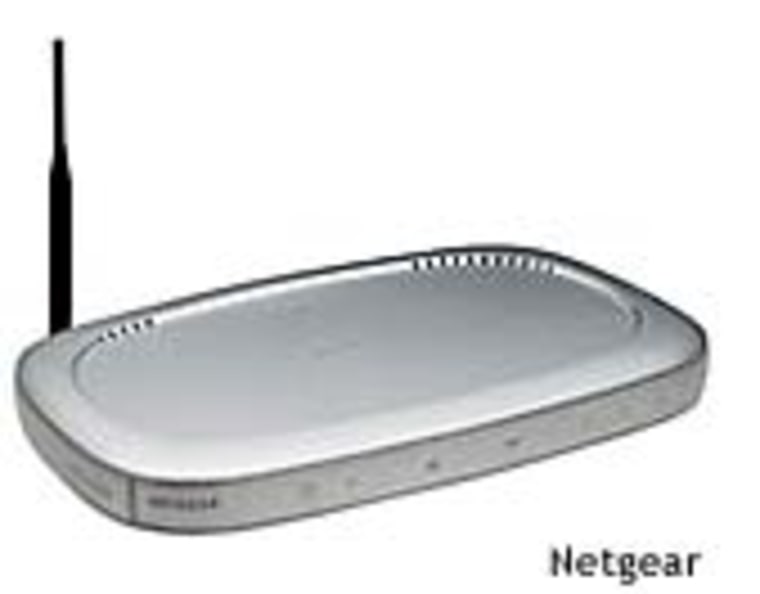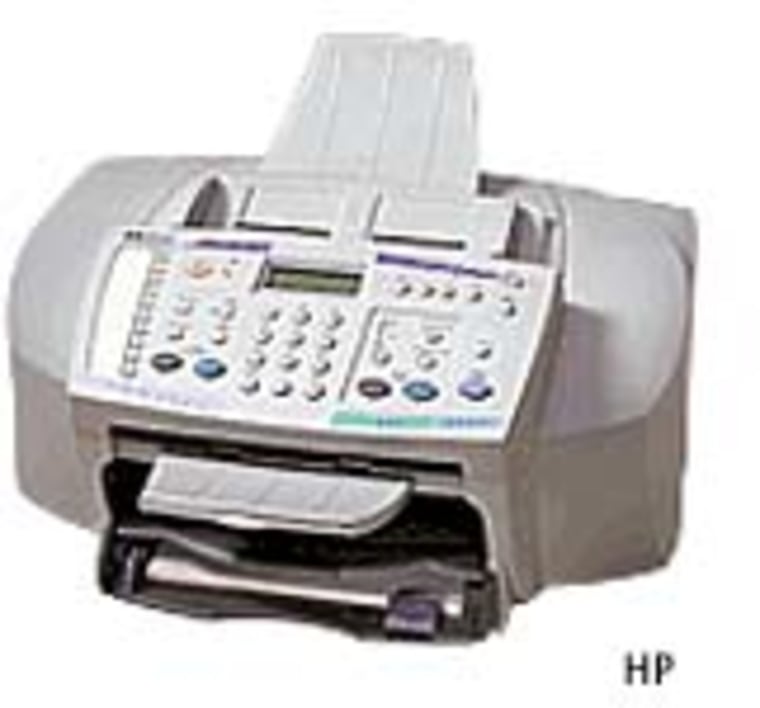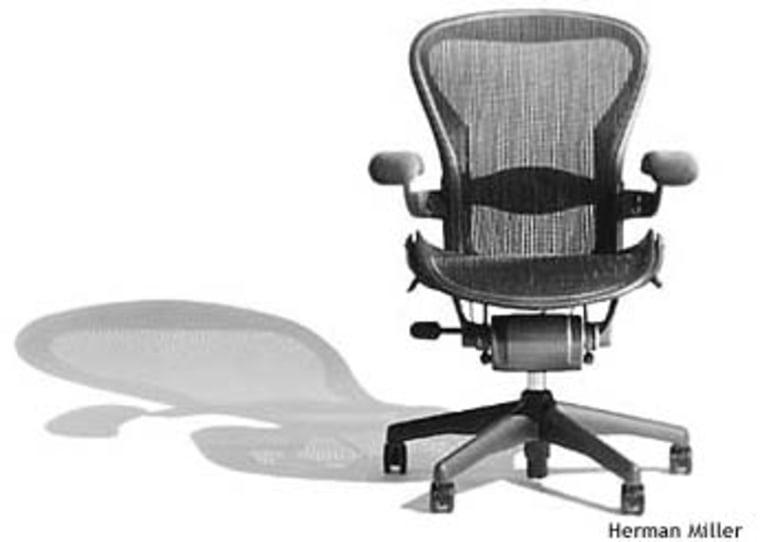This started out as a piece on which terrific new gadgets you might need for telecommuting. The latest and greatest cordless phone/answering machine/caller-ID system that also changes the toner in your printer sounds great. Or a super-duper wireless keyboard which also prepares espresso might be just for you. But, for the most part they’re merely cutting-edge toys (or less). And when you’re working from home you need tried and tested tools.
InsertArt(1793957)So here, from years of painful experimentation and experience, are the things you really need to be a successful telecommuter.
YOUR COMPUTER If your home computer is more than 3 years old, consider getting a newer one. Newer computers are faster, with more storage space and memory. They also come with better/faster/newer software (Windows XP and Mac OS X are prime examples).
Consider one of the new laptops on the market; many are now comparable to their desktop counterparts when it comes to speed and features. These so-called “desktop replacements” really do compete with their big-boxed brothers. Many laptops sport desktop processors, sound and video capabilities and even large, flat screens and upwards of two-to-three hours of battery life in between charges.
And, of course, they’re portable. Some even have wireless networking built inside (more about that in a minute).
Look at the latest offerings from companies like H-P/Compaq, Toshiba, IBM, Dell and Apple for large portables with monster screens. And when you compare desktops to laptops, make sure you’re looking at a pricey flat-screen monitor for the desktop and compare everything feature for feature. Those laptops won’t look so overpriced, then.
Also consider a good PDA. The latest Pocket PCs from Toshiba and H-P/Compaq have WiFi wireless networking built inside. And with Virtual Private Networking (VPN) software you can seamlessly join your company’s network at work over high-speed and wireless connections. VPN software is also becoming available for Palm PDAs as well.
HIGH-SPEED INTERNET ACCESS This is probably the most important item you can have if you plan to work from a remote location. It doesn’t matter whether you choose a DSL line, a cable modem, a satellite connection or even a wide-area wireless service (such as Ricochet, where available), it just matters that you have one.
You probably don’t even think about it, but in your office you’re connected to the network all the time. It should be the same from wherever you’re working. What you don’t want is to have to wait. Wait for a dial-tone, wait for a connection, wait for pages to download, etc. If your high-speed provider offers different speeds, opt for the fastest service you can afford. The small increase in the monthly fee is offset by everything working faster. That said, you probably don’t need a T-1 coming into your den; current fast offerings from DSL and cable providers will do just fine.
If you’re given a choice you should make sure you get a RJ-45 output connection from the DSL/cable/modem box. The RJ-45, which looks slightly larger than the telephone jack you’re used to seeing, is the standard for Ethernet networks everywhere, including wireless Ethernet (802.11b/WiFi). Plus, why waste a USB port on the high-speed connection, especially when most new computers have RJ-45 jacks built-in.
WIRELESS NETWORKING If you’re working at home, wireless Ethernet is one of the greatest inventions of all time, letting you use your computer in any room of your house. Just like cordless phones let you roam throughout the house, computers with 802.11a, b or g let you do the same thing with your computer or PDA.
For example, the morning of the shuttle Columbia disaster, I was three hours away from the office. I pulled out my laptop, and from my living room, dining room, bedroom and even bathroom I was able to have both my computer and a PDA connected to MSNBC for hours on end. I wasn’t tied to an Ethernet tether in my upstairs computer room.

As for the hardware, you’ll need a router box of some kind and an 802.11 card for your computer if it doesn’t have one built-in. The card, whether it’s a PC or CF or a soon-to-be-released SD card, should be easy to install. Windows XP recognizes most cards as soon as you insert them and does all the installation itself. Lindows can do the same thing. Many laptops and PDAs now come with WiFi built-in, meaning no extra cards or slots you have to think about.
As for the transmitter end of this deal, you have two choices: one is just the wireless box, which attaches to your home Ethernet distribution box, and the other combines the wireless stuff and a router and attaches to directly to your DSL/Cable modem. My current favorite is Netgear’s sleek MR814 wireless router. Installation was as easy as plugging it in and in a few months of testing it has been bullet-proof.
You may want to consider a wireless router with a built-in printer server; that’s a router which has a printer port. It allows you to plug in a printer that every computer on your home network, whether wired or wireless, can use.
YOUR PRINTER Get a good one. Get a fast one. And get one that can do as many things as possible in one box.
Space at home is limited so you don’t really want to have separate printers, scanners, copy and fax machines cluttering up the place. Go for an all-in-one device. I’ve tested a number of offerings from the H-P OfficeJet line and Lexmark all-in-ones and think they’re terrific. You should look and see which device has the features you need for your work.

The more you spend on your printer the better quality you’ll get out of them and the faster the pages will come out of the machine. If time is money, that’s a very big deal.
If it’s not, and you really just need a printer, there are dozens of great color ink-jets near the $100 mark which should fit the bill perfectly, from manufacturers like Epson, Canon, Lexmark and H-P. If you spend a lot less than $100, you’ll get a very slow machine. If you need photo-quality prints, spend more than $100.
Overall, I think ink jets give you more for your money, especially if you’re thinking of an all-in-one model. At home, I don’t need a color printer. I recommend the Samsung ML-1430 laser printer. With a retail price of $199 (I did an Internet search and found it as low as $139) it is very fast and incredibly good at printing pages. It’s what I use at home, along with an HP Fax 1020 ($149) which I use as my copy machine. Both are black and white and both do their job perfectly.

BEYOND TECHNOLOGY Some things that telecommuters never think of are the most important. How about your chair? Go for more than the $19.95 special at your local office store. It’s not outrageous to think in terms of something like an Aeron chair from Herman Miller. Splurge! Believe me, your back will thank you for considering its comfort.
Have enough paper. Printer paper. Paper for taking notes and phone messages. Stop writing on the back on envelopes and napkins. And make sure you have enough so you don’t run out in the middle of printing your 120-page document.
Buy yourself one good pen. Or, if you have problems hanging on to a good pen, buy yourself a gross of cheap ones. That way, if you lose one you have dozens to replace it.
Finally, stock your kitchen. Coffee, tea, soda, milk, sugar, Sweet ‘n’ Low. You get the idea. You’re working at home, you don’t want to have to run out to the store every time one of these home-office staples runs low. Of course, your store may make deliveries. Then, you can fill out a shopping list online, send it over your high-speed Internet connection from your wirelessly connected computer — or print out a copy and fax it.
Then again, it might be a good idea a take a break and get out of the house for a little while.